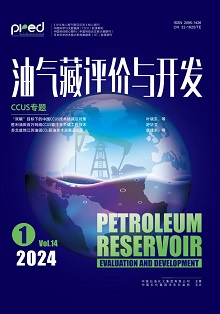The Hexingchang gas field of the western Sichuan Depression is an ultra-low porosity and ultra-low permeability tight sandstone reservoir, with well-developed and diverse types of fractures. The degree of fracture development plays a pivotal role in influencing on the migration, reservoir formation, and productivity of natural gas. In order to guide the exploration and development of the area, a comprehensive study was conducted to examine the development characteristics and underlying factors controlling fractures within the second member of Xujiahe Formation. This investigation drew upon a range of analytical techniques, including core observation, thin section analysis, imaging logging, and the examination of fracture filling inclusions. The fractures in the research area can be divided into three categories based on their genesis: structural fractures, diagenetic fractures, and abnormally high pressure fractures. There are three stages of development of structural fractures, corresponding to the late Indosinian period, mid late Yanshan period, and Himalayan period. Structural fractures have the characteristics of long extension, large width, and low filling degree of fractures; The diagenetic fractures are mainly bedding fractures, with a small amount of sutures developed; The development of abnormally high pressure fractures is relatively rare, which is related to hydrocarbon generation and pressurization. Building upon this foundation, the main controlling factors for the development of fractures were further clarified. The degree of structural fracture development is primarily influenced by a multitude of factors, including structural deformation, fractures, rock facies, rock layer thickness, and phase transformation; The development degree of diagenetic fractures is primarily influenced by rock facies and rock layer thickness; The development degree of abnormally high pressure fractures is chiefly influenced by hydrocarbon generation and pressurization. Based on the structural style and lithological combination of the second member of Xujiahe Formation in the research area, a fracture genesis model has been established. The fracture development area of the second member of Xujiahe Formation in the research area is located at the structural turning point, near the north-south trending fault, with a moderate thickness of single layer sandstone(sand mud interbedding, thick sand thin mud type), a north-south trending lithofacies change zone, and an abnormal pressure development area.








